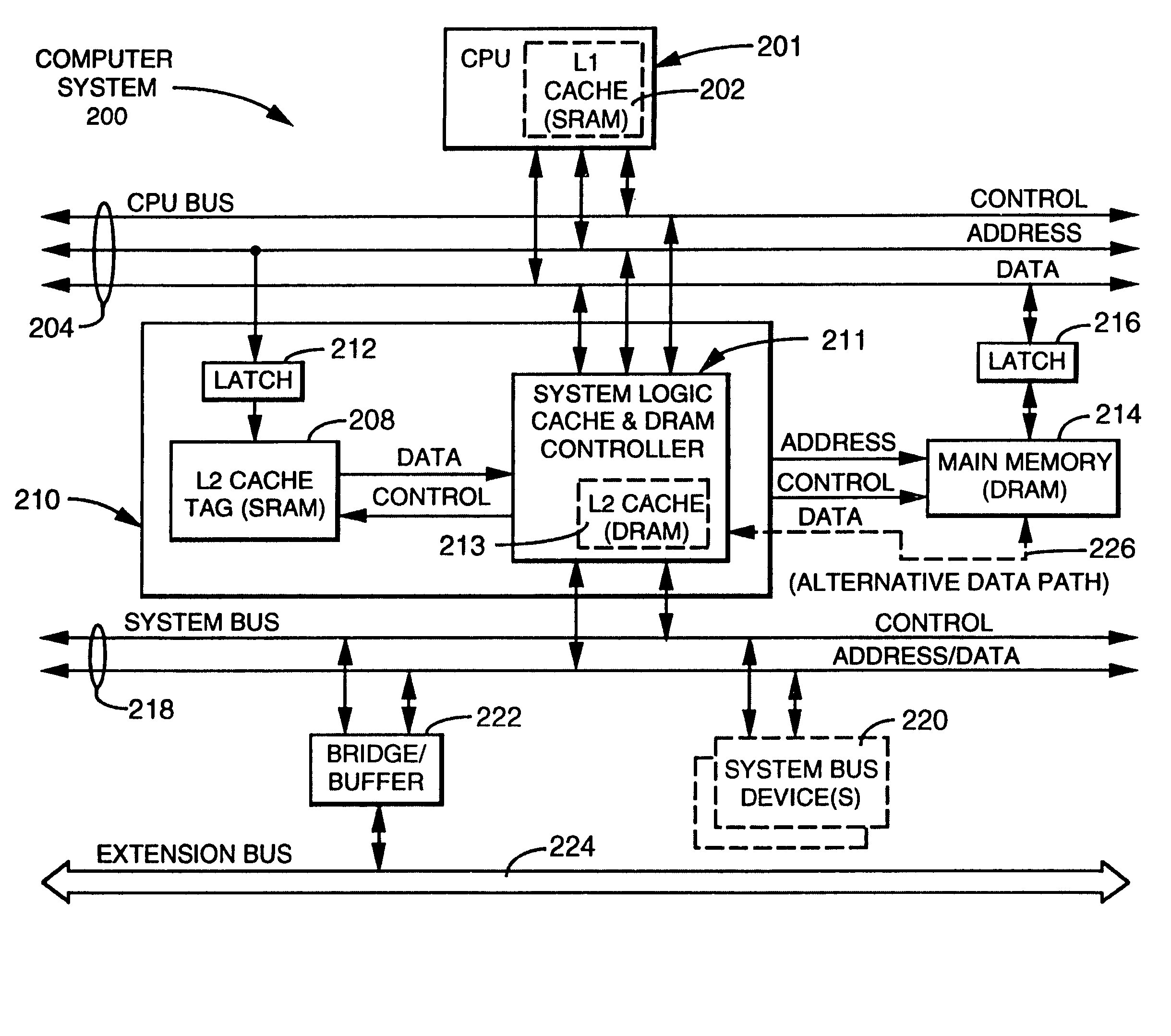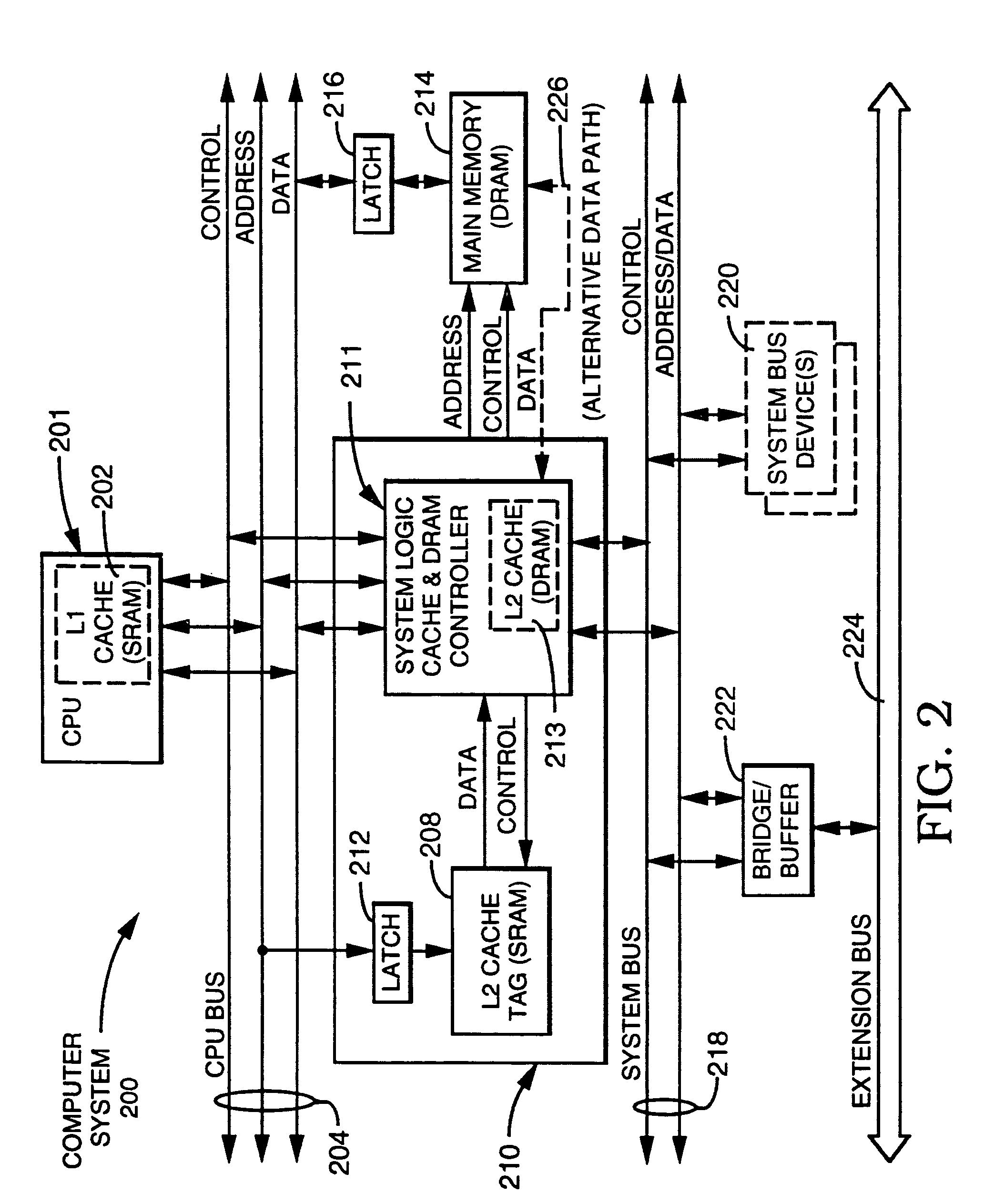High speed memory system
a memory system and high-speed technology, applied in the field of memory systems, can solve the problems of not reducing the cost of using sram cells to store memory bits, new drams are still not suitable for second-level cache operations, and drams are generally not considered to be suitable for high-speed operations, etc., to achieve the effect of increasing the width of the data input port, reducing the cost of sram cells, and increasing the storage capacity
- Summary
- Abstract
- Description
- Claims
- Application Information
AI Technical Summary
Benefits of technology
Problems solved by technology
Method used
Image
Examples
Embodiment Construction
[0052]FIG. 2 is a block diagram of computer system 200 which includes second level DRAM cache memory 213 in accordance with the invention. In addition to second level DRAM cache memory 213, computer system 200 includes CPU 201, first level SRAM cache 202, CPU bus 204, latches 212 and 216, second level SRAM cache tag memory 208, system logic controller 211, main DRAM memory 214, system bus 218, bridge buffer circuit 222, system bus devices 220 and extension bus 224.
[0053]Although DRAM cache memory 213 is referred to as a “second level” cache memory, it is understood that the present invention can also be applicable to other “levels” of cache memory higher than the second level (e.g., third level or fourth level). In general, the present invention is applicable to the “next level” cache memory, where the “next level” cache memory is defined as the cache memory which is connected between the processor and a large-capacity main memory (where the main memory is typically DRAM). Using thi...
PUM
 Login to View More
Login to View More Abstract
Description
Claims
Application Information
 Login to View More
Login to View More - R&D
- Intellectual Property
- Life Sciences
- Materials
- Tech Scout
- Unparalleled Data Quality
- Higher Quality Content
- 60% Fewer Hallucinations
Browse by: Latest US Patents, China's latest patents, Technical Efficacy Thesaurus, Application Domain, Technology Topic, Popular Technical Reports.
© 2025 PatSnap. All rights reserved.Legal|Privacy policy|Modern Slavery Act Transparency Statement|Sitemap|About US| Contact US: help@patsnap.com



